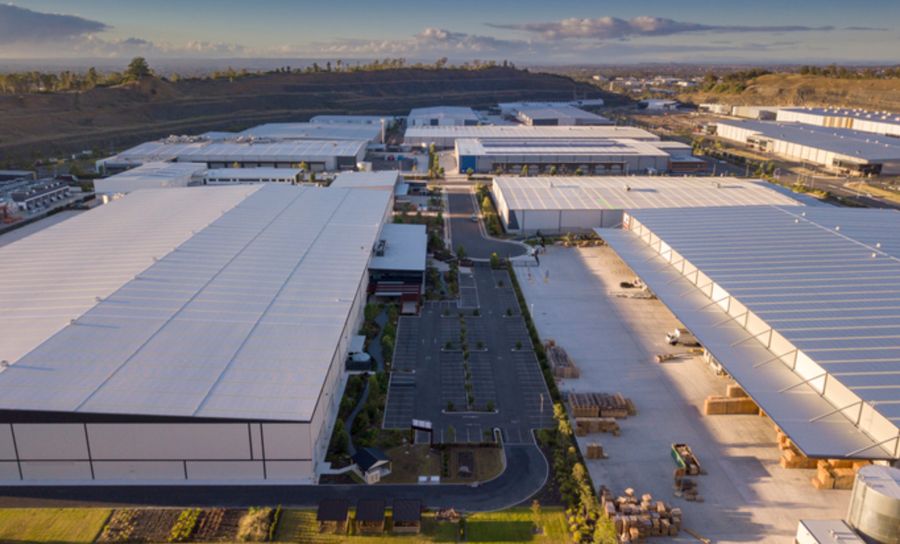
Industrial property has become the fastest changing sector in Australia. A historically unsophisticated market has become one of the most complex in a short space of time. It is now not only a supply chain based sector, but is also a new retail footing for companies utilising online models.
A significant proportion of Australian warehouses and supply chain systems are outdated or not properly suited to the rapidly changing Australian retail, transport and infrastructure landscape. The sector has reached an inflection point where future operational decisions will determine whether many organisations survive the next 5 to 10 years.
If we look to overseas, Radio Shack, Payless Shoes, JC Penny, Sears, HH Gregg, MC Sport, Gander Mountain and Route 21 will combine to close over 1,500 “bricks and mortar” retail outlets as they shift their operating model to cater to a marketplace of far greater direct to consumer activity. There is little doubt the same macro dynamics and pressures will force similar significant change locally, and the speed to respond to this will be a critical factor in the evolutionary story of retail survival when we look back at this period.
There are more products than ever being consumed by customers and the pathways to how that product ends up with the consumers is drastically changing and becoming more complex. The traditional Business to Business (B2B) sector has historically been served by “pallet in and pallet out” systems but the major change to the sector is the requirement to now have a business that caters or provisions for a separate pathway which is Business to Customer (B2C). The exponential growth in online retail requires retailers to deliver direct to customer, requiring far greater operational flexibility from distribution centres. A significant percentage of existing distribution centres designed for pure B2B activity across Australia are not designed to cater for the shifting retail landscape and need substantial change and investment to remain relevant.
TOP 8 IMPACTS OF THE GROWTH IN B2C ACTIVITY ON OPERATIONAL DESIGN CONSIDERATIONS:
1. SMALLER TRANSPORT MODES WITH MORE FREQUENT PICK UPS
More item level deliveries, resulting in changes to staging areas, hardstand interaction and layout, dock types and canopy designs.
2. SAME DAY AND JUST IN TIME DELIVERY DRIVING UP TRANSPORT COSTS
This places huge importance on the assessment of location and the need for route optimisation intelligence.
3. SIGNIFICANT CARTON AND ITEM LEVEL PICKS
Having a clear understanding of the internal operations and fitout of the facility prior to going to the property market is critical. Storage and operational solutions will largely determine the building size and height. Storage, whilst important, will now need to interact significantly with flow and throughput.
4. HIGHER REVERSE LOGISTICS VOLUME
A necessary evil in the growth of online sales is the growth in returns. A sensibly sized area within the warehouse needs to be allocated for returns and rework. Site layouts need to consider how returns will be managed most efficiently.
5. GREATER SITE FOOTPRINT FOR OUTBOUND STAGING AREAS
An increase in item level products and smaller loads means that there is a requirement for more staging area within the warehouse. Efficiency of pick to order requirements also need to be improved.
6. CHANGES IN MATERIAL HANDLING SOLUTIONS TO CATER FOR CASE OR ITEM PICKS
This in turn leads to possible automation opportunities.
7. TIGHTER INVENTORY CONTROLS LEADING TO ENHANCED WMS FUNCTIONALITY
Speed and accuracy to customer has never been so important.
8. TO AUTOMATE OR NOT AUTOMATE
If automation is not a viable option or does not suit the specific operation, a manual environment will often increase headcount to cater for smaller, more frequent orders. This can lead to increased site amenities, parking and OH&S controls to cater for these additional staff.
by Jessica Hammoud in Latest News
Archived Posts
- April 2025 (1)
- February 2025 (4)
- December 2024 (1)
- November 2024 (3)
- October 2024 (1)
- September 2024 (1)
- August 2024 (1)
- July 2024 (1)
- February 2024 (2)
- November 2023 (3)
- July 2023 (3)
- March 2023 (1)
- September 2022 (1)
- June 2022 (3)
- March 2022 (1)
- February 2022 (6)
- May 2021 (2)
- March 2021 (1)
- February 2021 (1)
- December 2020 (1)
- November 2020 (1)
- October 2020 (1)
- September 2020 (1)
- August 2020 (1)
- July 2020 (4)
- February 2020 (1)
- December 2019 (3)
- August 2019 (1)
- July 2019 (1)
- June 2019 (1)
- March 2019 (4)
- February 2019 (3)
- December 2018 (3)
- November 2018 (3)
- October 2018 (3)
- September 2018 (3)
- August 2018 (3)
- July 2018 (3)
- June 2018 (3)
- May 2018 (8)
- April 2018 (3)
- March 2018 (2)
- February 2018 (3)
- December 2017 (3)
- November 2017 (4)
- October 2017 (5)
- August 2017 (3)
- July 2017 (3)
- June 2017 (3)
- May 2017 (3)
- April 2017 (10)
- March 2017 (3)
- February 2017 (4)
- December 2016 (5)
- November 2016 (10)
- October 2016 (6)
- September 2016 (6)
- August 2016 (3)
- July 2016 (3)
- June 2016 (2)
- May 2011 (1)

